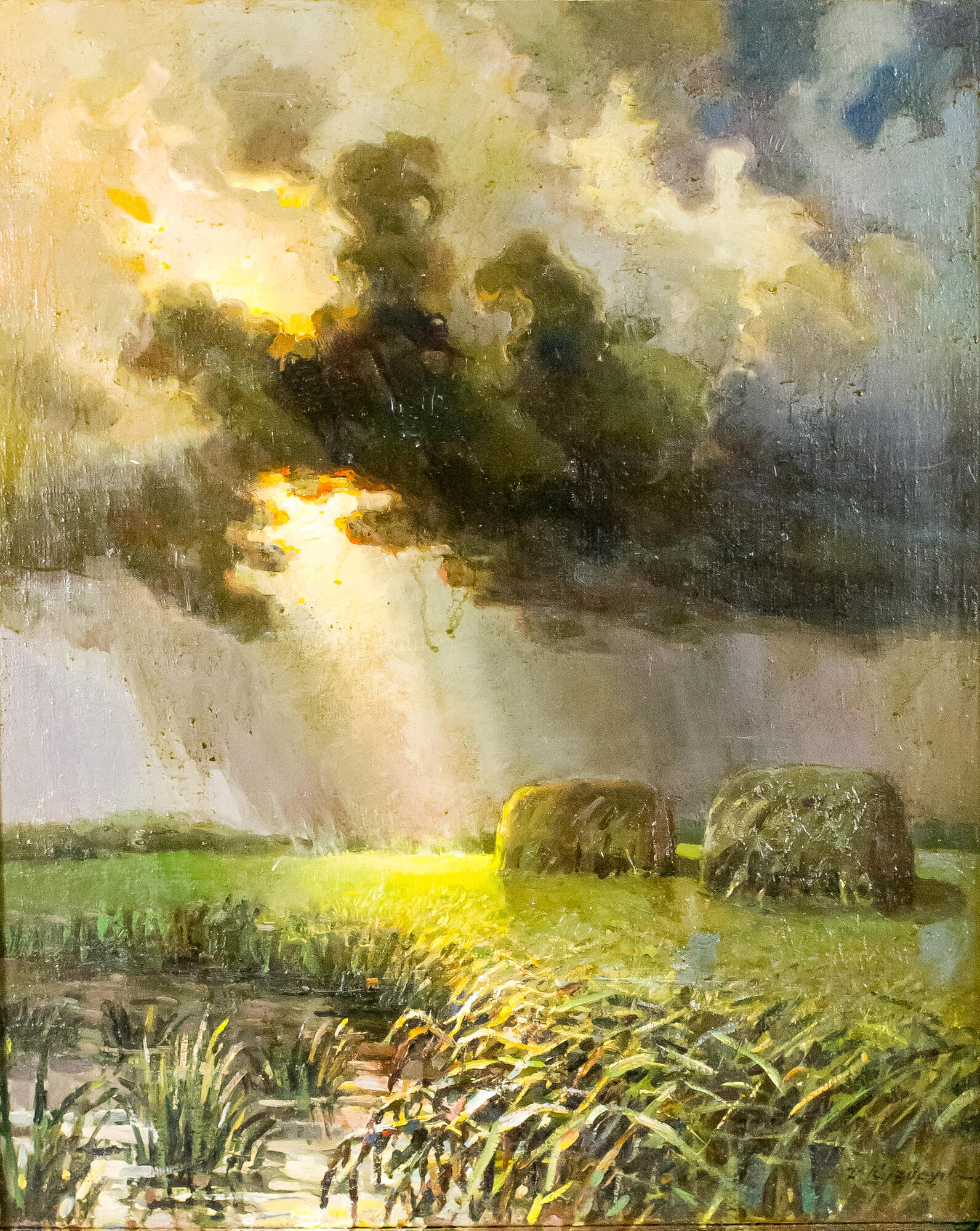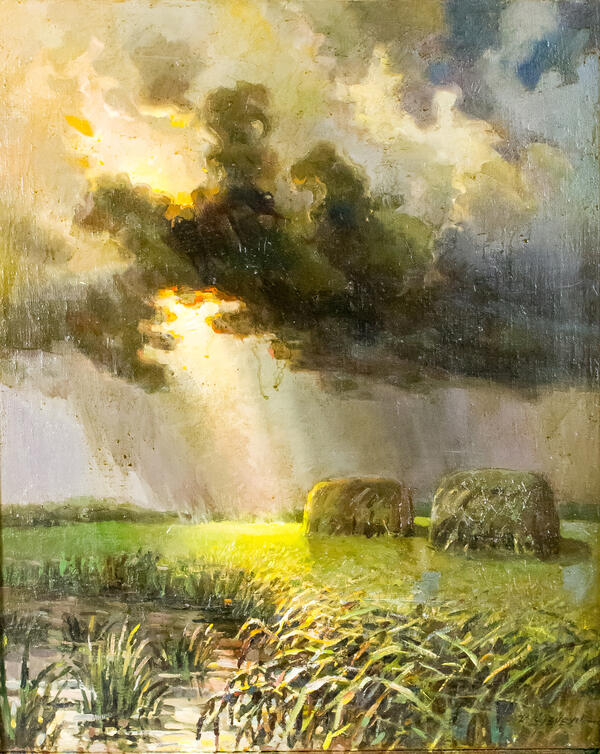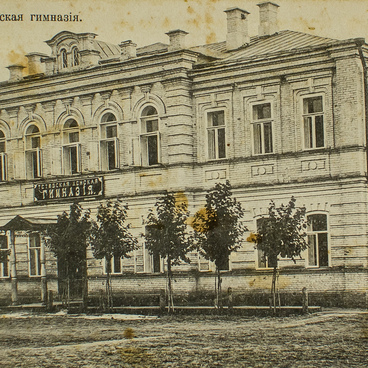The artist and musician Ivan Kuznetsov was born in 1914 in the Narmonka village, Tetyushsky district, Kazan province. The future artist’s family lived in the village until 1921, and then the Kuznetsovs moved to Baku, where Ivan began to draw.
Following another relocation, he entered the Art School in Perm, and successfully finished it in 1930. Kuznetsov became keen not only on painting: for more than 50 years, he acted in a professional capacity as a classical guitar soloist at the Kiev Philharmonics. He was a guitar teacher at the music school in Rovno city and performed on the stage of the Kiev Conservatory. In addition, Kuznetsov was the author of his own guitar playing school and a number of Concert pieces. One of the articles of the International Guitar Encyclopedia article covers his life.
Since 1985, Kuznetsov often visited his native land, where he painted a lot from life. Within this period, he made a series of Volga landscapes, part of which is kept in Tetyushi Museum repository collections, including the “Thunderstorm” picture.
Ivan Kuznetsov painted the “Thunderstorm” picture in the summer of 1987 during his vacation in Dolgaya Polyana village, Tetyushsky district. The artist’s canvas depicts a summer landscape. The foreground of the painting is a pond with bulrushes, bending over from the wind. Behind the pond, Kuznetsov painted a green meadow with two haystacks. There is a forest on the horizon line. Black heavy thunderclouds were overcast the sky, and a sunbeam came through them and falls onto the meadow as a bright stripe.
The picture is set in a baguette frame, which once belonged to representatives of the noblest blood of the Molostvovs, the owners of the Dolgaya Polyana village estate. The village was founded in the 18th century, in the Kazan province and became the family seat of the Molostvovs. The Molostvovs' estate is the only survived rural manor of the nobility in Tetyushsky municipal district.
The pond with the bulrushes, depicted by Kuznetsov in his painting, is the upper of the three ponds made by the last owner of the estate Vladimir Molostvov. Three ponds were excavated at different levels and connected by a water cascade. Trout and white swans were bred in the ponds.
Following another relocation, he entered the Art School in Perm, and successfully finished it in 1930. Kuznetsov became keen not only on painting: for more than 50 years, he acted in a professional capacity as a classical guitar soloist at the Kiev Philharmonics. He was a guitar teacher at the music school in Rovno city and performed on the stage of the Kiev Conservatory. In addition, Kuznetsov was the author of his own guitar playing school and a number of Concert pieces. One of the articles of the International Guitar Encyclopedia article covers his life.
Since 1985, Kuznetsov often visited his native land, where he painted a lot from life. Within this period, he made a series of Volga landscapes, part of which is kept in Tetyushi Museum repository collections, including the “Thunderstorm” picture.
Ivan Kuznetsov painted the “Thunderstorm” picture in the summer of 1987 during his vacation in Dolgaya Polyana village, Tetyushsky district. The artist’s canvas depicts a summer landscape. The foreground of the painting is a pond with bulrushes, bending over from the wind. Behind the pond, Kuznetsov painted a green meadow with two haystacks. There is a forest on the horizon line. Black heavy thunderclouds were overcast the sky, and a sunbeam came through them and falls onto the meadow as a bright stripe.
The picture is set in a baguette frame, which once belonged to representatives of the noblest blood of the Molostvovs, the owners of the Dolgaya Polyana village estate. The village was founded in the 18th century, in the Kazan province and became the family seat of the Molostvovs. The Molostvovs' estate is the only survived rural manor of the nobility in Tetyushsky municipal district.
The pond with the bulrushes, depicted by Kuznetsov in his painting, is the upper of the three ponds made by the last owner of the estate Vladimir Molostvov. Three ponds were excavated at different levels and connected by a water cascade. Trout and white swans were bred in the ponds.




